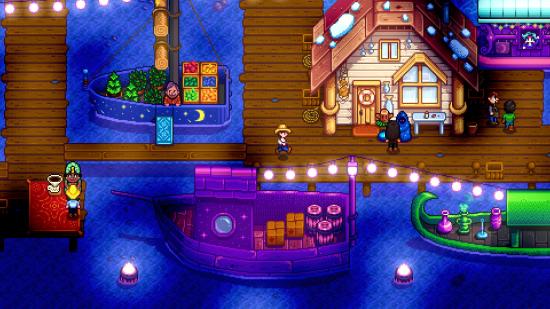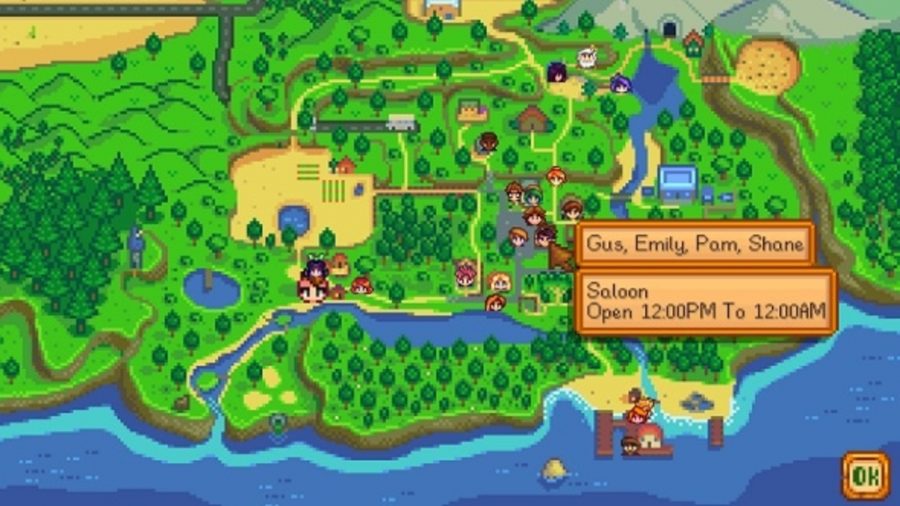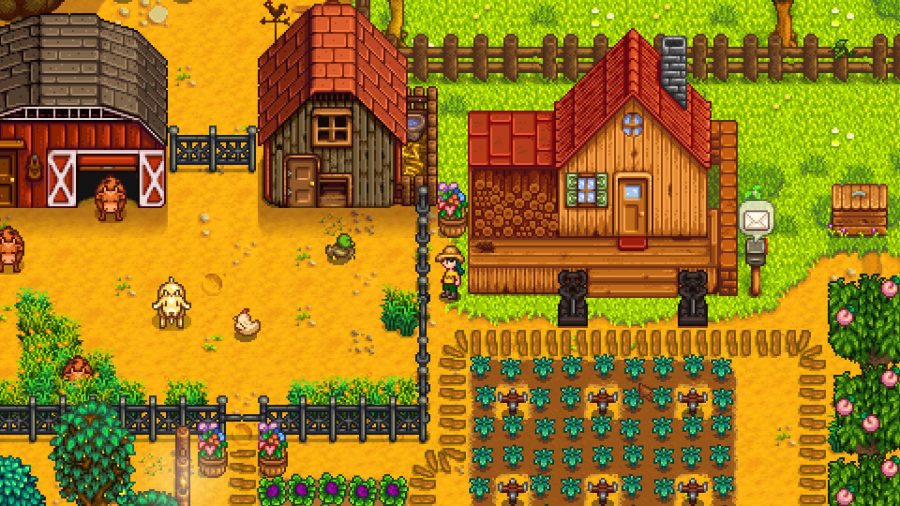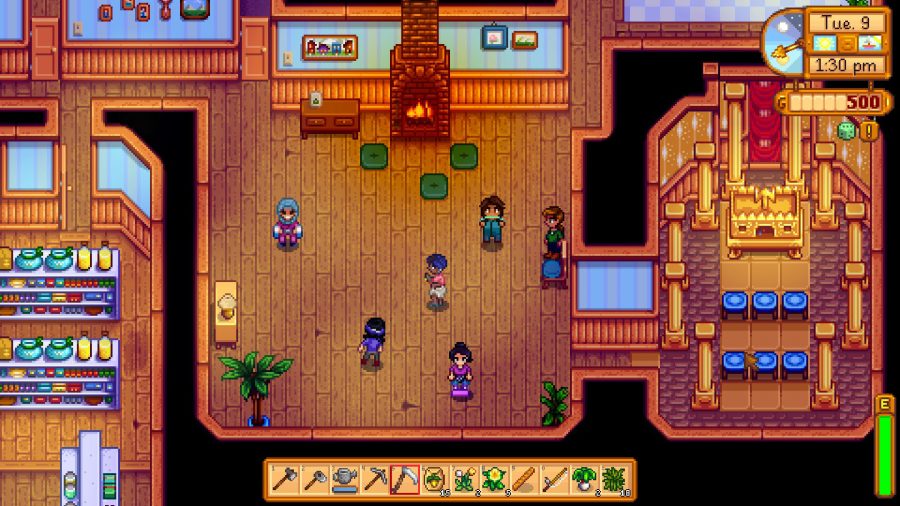Stardew Valley packs the appeal of running a farm into an attractive 16-bit package, but there’s more to it than planting crops and selling them. Spread across the titular valley’s compact map are a number of ways for you to be both a productive farmer and an active member of the village community. There’s so much on offer, in fact, that Stardew Valley employs the dynamics of theme park design to quietly encourage you to attend each and every attraction without forcing any of it on you.
Stardew Valley’s world isn’t very big. You can travel from one end of the map to the other in a couple of minutes. But that fact goes out the window once you get acquainted with the game’s ‘attractions’ – to use theme park vernacular. Rather than aiming for scale, the map is made to be dense, and is being divided into different sections with unique activities to do in each.
While that simple map could be said to reflect the layout of a theme park by itself the similarities go deeper as each of the attractions come with a waiting period. As anyone who has been to a theme park will know, queuing up for rides is a central part of the experience, and so it is an important part of theme park design. As such, park designers count on you equating queue times with attractions that are worth the wait.
Back in Stardew, you are expected to wait for crops to grow and buildings to be constructed. This would be annoying except that you can justify the waiting period with the rewards you can reap once it’s over. In this way, playing the game is mostly a case of time management, as you try to ensure you are doing the range of activities as efficiently as possible, avoiding inaction at all costs.
But there’s more to these queues than the promise of what’s at the end. Modern theme park designers want the process of waiting to be an entertaining experience. Elaborate and often interactive sets placed around queuing areas make the downtime feel like part of the ride, building anticipation. In Stardew, that takes the form of how much multitasking the game lets you do.
When you’re walking across the valley trying to get everything done, your trek is going to overlap with other activities that will grab your attention. Head on over to the lake for a spot of fishing and you might notice that berries have grown on the nearby bushes, so you pick some along the way to sell later. The same holds true for the activities that take days to complete – you’re never stood on the spot, passively waiting, you break up the time with planting, feeding animals, and buying seeds. You never come to a complete standstill as each journey reveals more small tasks.
When at a theme park you will find that it’s almost impossible to see every attraction in one day. This is not an accident: not only does the surplus of rides encourage visitors to come back another day, it means a theme park’s hotels are always taking in extra income. The same goes in Stardew as its daily cycle means you can’t do everything in one day. That, in turn, forces you to compartmentalise the game.
This makes play variation more appealing as you every morning you have to figure out what you want to achieve before sunset. By having its activities roll over several days, almost overwhelming you with everything that needs to be done, Stardew breeds ‘one more turn syndrome’ within you, just as the Civilization series is famous for doing.
Stars in your files: Here are the best Stardew Valley mods
Then there’s Stardew’s community centre, which task you with delivering certain goods from every attraction in the game. By incentivizing you to do all the activities, the community centre becomes the focal point for you mapping out how you want to navigate the game, the same way a brochure helps you decide your path through a theme park. The community centre also creates an abstraction of the map, much like an amusement park map is distorted and cartoony.
You’ll also see that the paths are deliberately crooked and indirect rather than providing a straight line from one attraction to the next. The purpose of this is to encourage you to experiment with how you reach your destination. Theme parks and Stardew alike want you to get lost among the shops and sideshows along the way.
How realistic is Stardew Valley? We asked a farmer to find out
Both Stardew Valley and theme parks are designed to have you see as much activity and opportunity as possible. You may not realise it, but next time you wander the valley, pay attention to the subtle cues steering your path.



